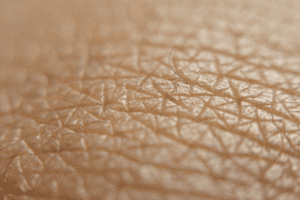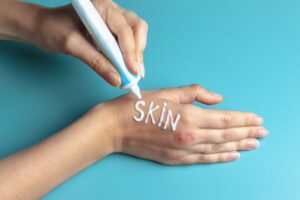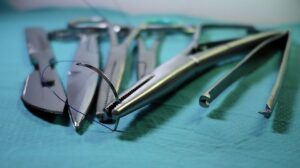Hidradenitis Suppurativa (HS)
What is Hidradenitis Suppurativa?
Hidradenitis Suppurativa (HS), also known as “acne inversa,” is a chronic inflammatory condition characterized by recurring painful bumps that form under the skin within hair follicles and near sweat glands. The bumps usually form in places on the body that are subject to higher levels of friction or moisture, such as the armpits or groin. Often times, the bumps get infected, which can lead to the formation of sinuses/drainage tunnels within the skin. These tunnels can form rope-like scars in the affected areas, and the bumps often recur and heal slowly. There are multiple progression levels of HS, categorized into three “Hurley Stages,” depending on the severity of symptoms. It is estimated that about 1 in every 100 people are living with HS.
What are the symptoms of Hidradenitis Suppurativa?
Hidradenitis Suppurativa has the following symptoms:
- Painful bumps beneath the skin (usually around the armpits, groin, buttocks, and breasts)
- Inflamed raised bumps that may become abscesses and often recur in the same location(s)
- Drainage tunnels/sinus tracts that cause rope-like scarring in affected areas
- Sensations such as itching, burning, irritation, or pain around affected areas
- Small black-head like spots around affected areas
What causes Hidradenitis Suppurativa?
Doctors aren’t yet fully sure of what the exact cause is, but it is currently thought to be a combination of genetics, hormones, and environmental factors. It is known that blocked hair follicles play a major role in the formation of the painful bumps. In the United States, women are 3 times more likely than men to develop HS. However, this varies around the world – in South Korea, men are two times more likely to develop HS. It is thought that Black people are also more likely to develop HS than other races, further indicating a genetic component that may vary on a racial basis.
Many patients living with HS report flare-ups tied to their menstrual cycles, as well as flare-ups during periods of stress, suggesting a hormonal basis as well. Environmental factors that contribute to flare-ups include smoking, wearing tight clothing, sweating, and obesity. It also seems more prevalent in people who have a predisposition to acne-prone skin. HS is not contagious, and is not tied to hygiene (frequency of bathing, usage of deodorant, frequency of shaving, etc).
How is Hidradenitis Suppurativa diagnosed?
Hidradenitis Suppurativa is diagnosed by visual examination of the affected area(s). Doctors will make their diagnosis based on the location of the bumps, as well as whether or not they recur and if there is any presence of the trademark tunneling. Most doctors will also ask questions about family history, due to the prevalence of genetics in this condition.
The initial onset for most patients with HS is during puberty, though some patients report the first development of symptoms at varying ages, generally up to 40. In some patients, symptoms may lessen around age 40-50, but it is a lifelong chronic condition for many.
What are the treatments for Hidradenitis Suppurativa?
While there is currently no cure for HS, certain treatments can help mitigate the severity of outbreaks. Warm compresses and NSAIDs (such as ibuprofen) can help with swelling and pain, while antibiotics may be prescribed if bumps progress into leaky abscesses. Hormone therapy may be beneficial for some, and laser therapy on hair follicles in the affected areas has been reported to help certain patients as well.
Management of environmental symptoms is also important. This can include reducing stress, losing weight, quitting smoking, wearing loose clothing, and using fragrance-free products designed for sensitive skin to reduce risk of irritation. If shaving with a razor causes irritation/”razor bumps,” switching to an electric trimmer may be gentler on the skin.
A classification of injections known as biologics may help your body’s immune system, such that it does not induce these flare-ups as frequently.
For patients living with advanced stages of HS and experiencing severe frequent outbreaks, surgical excision of the affected area (either partially or entirely) is an option, followed by a skin graft from an unaffected area.
Where can I find out more about Hidradenitis Suppurativa (HS)?
Hidradenitis Suppurativa (HS) Articles

GLP-1 Medications Emerge as a Promising Option for Hidradenitis Suppurativa Management

Children with Hidradenitis Suppurativa Face High Rates of Acne, Obesity, and Anxiety


ICYMI: Make HStory Platform Offers Hidradenitis Suppurativa Education and Community Support

Experimental Hidradenitis Suppurativa Therapy Falters in Clinical Trial


The Latest Webinar from NORD Showcases the Rare Disease Patient Experience




